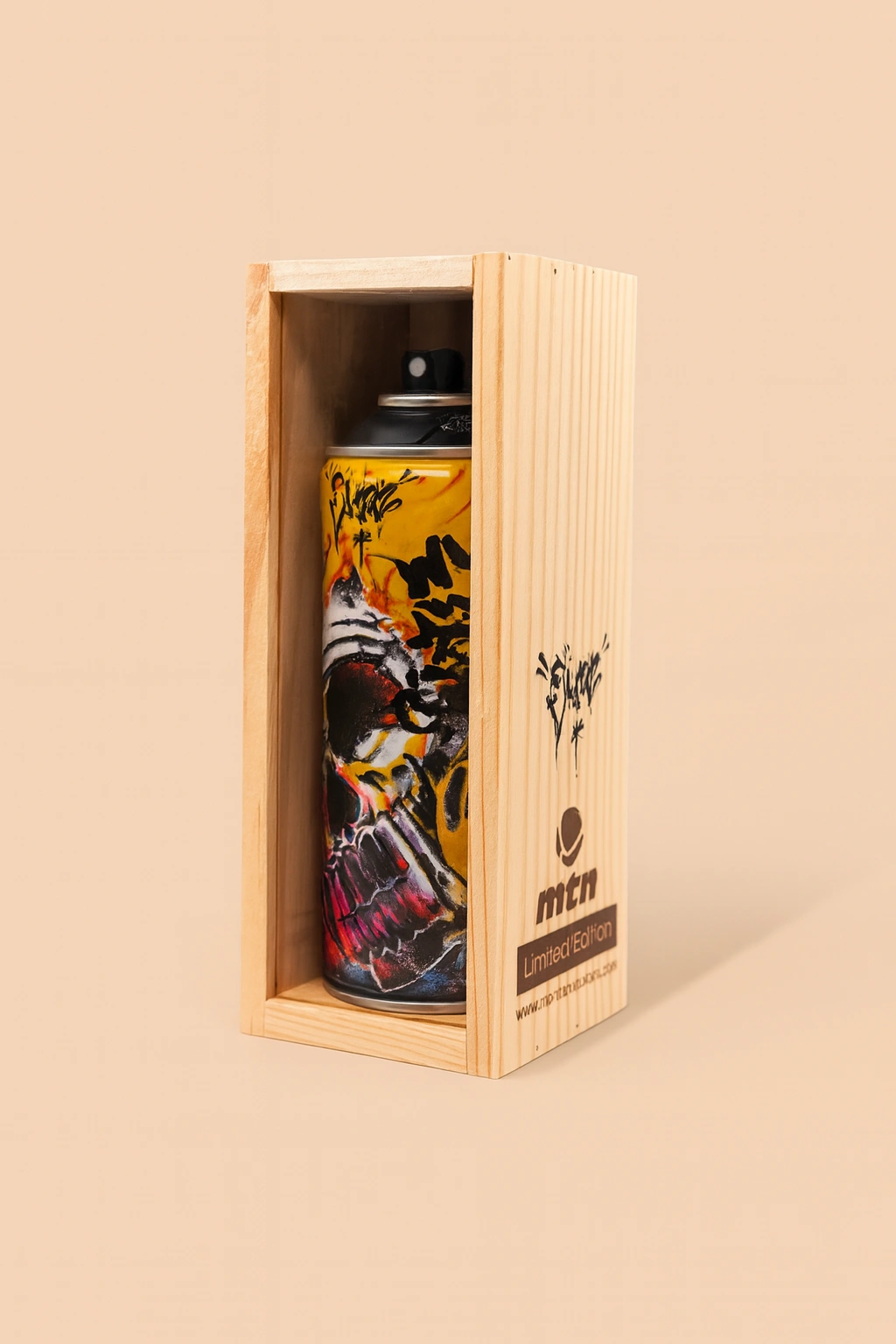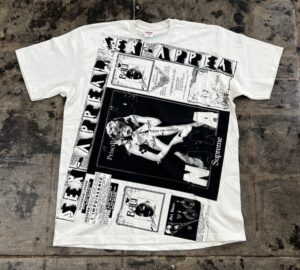In the swirling, heated world of contemporary art, few images strike as deeply as the one you see here: two police officers appearing to search or interrogate a skeletal figure painted in the unmistakable style of Jean-Michel Basquiat. Behind them, an anxious dog stares on, set against a wild, expressionistic orange-yellow background. The scene is both comical and unsettling, embodying the tension between authority and creativity, freedom and control.
The work in question has been heralded by Banksy experts as one of his most important pieces. Another iteration sold for a staggering $9.7 million at auction in 2023 and now resides in Washington D.C.’s Smithsonian Hirshhorn Museum, a testament to its cultural weight. But beyond its auction price and institutional endorsement lies a complex narrative about who controls art, who defines its value, and how subversive creativity is ultimately absorbed—or “arrested”—by the very structures it critiques.
Banksy has long been a master of satirical commentary, using stencils to challenge political systems, consumerism, and social hypocrisy. His works pop up overnight in urban environments, transforming walls and streets into charged canvases. His anonymity only intensifies the mystique, allowing the focus to remain on the message rather than the messenger.
Meanwhile, Jean-Michel Basquiat, though decades apart in age and geography, shared a similar ethos. Emerging from New York’s gritty underground in the late 1970s, Basquiat transformed graffiti into fine art, blending street iconography with expressive brushwork and text fragments. His skeletal figures, crowned heads, and cryptic symbols expressed the anxieties of race, power, and self-identity in a system stacked against marginalized voices.
In this collaborative visual universe, Banksy’s painting acts almost as a dialogue with Basquiat beyond the grave. The skeletal figure, in Basquiat’s vocabulary, represents the raw human condition: stripped down, vulnerable, electric with emotion. Here, it is being “searched” by police officers—emblems of institutional scrutiny. The officers’ stenciled precision contrasts starkly with the feverish, impulsive strokes of the Basquiat-inspired figure. The juxtaposition suggests a violent clash between the free spirit of artistic expression and the cold apparatus of state control.
At first glance, the image is humorous. It invites laughter at the absurdity of police officers frisking a painted figure. But as with all of Banksy’s work, the humor is a Trojan horse. Beneath the joke lies a scathing critique: street art, once considered vandalism, is often later recontextualized and commodified by the same authorities that sought to suppress it. This dynamic mirrors Basquiat’s trajectory from underground artist to blue-chip darling. During his life, Basquiat faced both racial stereotyping and financial exploitation. After his untimely death at 27, his work skyrocketed in value, collected by billionaires and hung in elite galleries.
The presence of the dog—a creature commonly depicted in Basquiat’s oeuvre as a symbol of both loyalty and aggression—further complicates the scene. Here, the dog seems torn between playfulness and wariness, echoing the public’s love-hate relationship with subversive art.
Beyond the individual artists, the painting speaks to a larger cultural pattern: society’s cyclical tendency to demonize, sanitize, and eventually capitalize on rebellious creative forces. This process, in which once-radical expressions are “policed” into marketable commodities, has repeated throughout art history. Impressionists, Dadaists, Abstract Expressionists, and even the punk scene experienced similar trajectories. Today, as street art auctions for millions and becomes institutionalized, the line between rebellion and acceptance blurs more than ever.
The vibrant orange and yellow background serves as a psychological stage, hinting at both warmth and danger. The colors evoke urban sunsets, crumbling walls, and fading graffiti tags. Drips and rough textures allude to the ephemeral nature of street art: here today, painted over tomorrow. This sense of impermanence underscores the irony of immortalizing such work in museums and high-end collections.
The monetary success of this piece—reflected in its multi-million-dollar sale and museum acquisition—raises critical questions. Can art remain radical when it becomes so deeply embedded in the commercial system? Does the institutional embrace signify victory for the artist’s message, or does it signal co-option? Banksy himself has wrestled with these contradictions. Despite his anti-establishment stance, his works now fetch prices rivaling those of old masters. In response, he has staged stunts such as the partial shredding of “Girl with Balloon” at auction in 2018, a visceral reminder of art’s resistance to capture.
Yet, there is power in paradox. Banksy and Basquiat, despite being absorbed into the establishment, continue to challenge and provoke. The police figures in this painting might represent the literal forces of order, but they also embody metaphorical forces—critics, collectors, historians—who dissect, interpret, and attempt to control artistic meaning. In the process, the artwork maintains a slippery autonomy, forever dodging a final interpretation.
Perhaps this is why the work resonates so deeply. It captures the eternal struggle between creative expression and societal regulation. It invites us to laugh, then forces us to think, then compels us to act. It refuses to be pinned down, mirroring the very nature of graffiti: ephemeral, elusive, alive.
The fact that an iteration of this piece now hangs in the Hirshhorn Museum, an institution celebrated for championing contemporary voices, only deepens the irony. The same establishment that once rejected street art as vandalism now showcases it as cultural treasure. In this way, the painting becomes a living critique of its own context, a mirror held up to the viewer, and to the system itself.
This piece stands as a testament to the power of art to question, disrupt, and reflect. It fuses two titans of modern expression—Banksy and Basquiat—into a single, urgent conversation. It reminds us that art, even when appropriated and monetized, retains the capacity to sting, to awaken, and to reveal uncomfortable truths. As long as these questions persist—about power, ownership, authenticity—the work remains vital. And perhaps that is the highest achievement any piece of art can aspire to: to remain uncaptured, forever asking, forever alive.
No comments yet.








